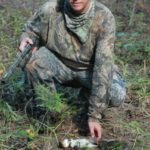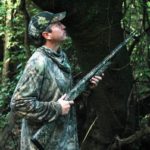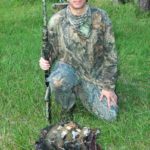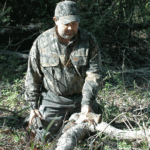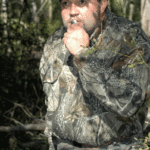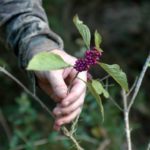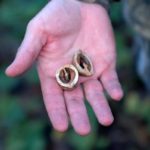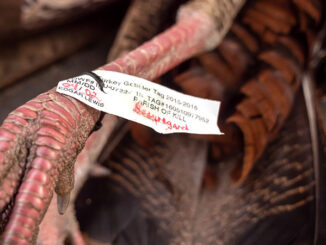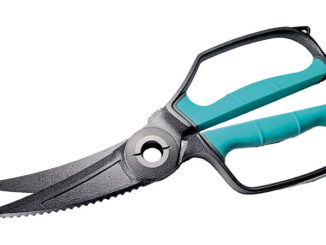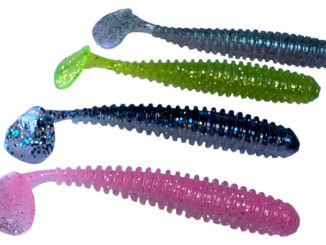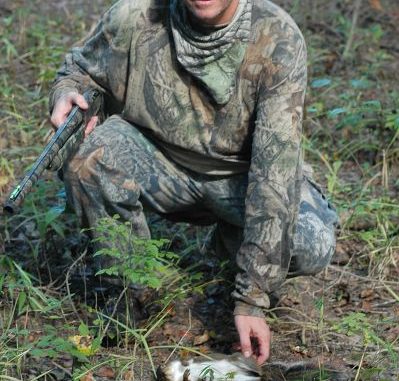
Opening week of squirrel hunting season in the Bayou State presents your best opportunities at bagging a limit.
Sammy Guillory of Breaux Bridge was a man on a mission near the end of one of his first hunts during the 2011 Louisiana squirrel season.
Looking through his bag, the 50-year-old hunter counted seven squirrels — five greys and two large foxes — and the morning was getting late.
“I then heard some barking, and I needed just one more squirrel to get my limit,” recalled Guillory.
But the hunter heard something different in the characteristics of this squirrel’s bark: The sound was deep and raspier, and Guillory set off toward the barking with renewed interest and energy.
“I arrived in the area, and I sat down and remained still until I could locate the squirrel,” he said. “The squirrel just kept barking, and I figured out it had to be in one of two pine trees a few yards away.”
Guillory stood up and hid beneath the branches of a nearby oak and waited.
“Finally, the squirrel moved into my view as it twisted around a branch of a tall pine,” the hunter said. “I shot her in the head.”
When he walked over and picked the female squirrel up, Guillory noted a tan coat and a large head. The hunter had evidently scored on a big-headed fox squirrel — one of the diverse subspecies of fox squirrels to be found in Louisiana’s western parishes.
“I had my limit, and that last squirrel made me very happy because of its color,” Guillory said.
In another section of the woods, on opening day, 44-year-old Myron Berzas of Port Barre had been moving quickly. He too had been killing squirrels all morning, and he had six greys and one fox squirrel in his bag.
He needed that last squirrel because he wanted to get back to the camp to see the LSU-Kentucky game scheduled at 11:20 a.m.
It was 10:20 a.m., and the camp was 30 minutes away from his hunting location.
Looking up and ahead, Berzas saw a couple of squirrels on the edge of a creekside bottom.
“I figured they would see me if I crept into the open area, so I grabbed my Mr. Squirrel Whistle and started blowing,” he said.
It didn’t take long for one of the squirrels to get interested and move from branch to branch toward the hunter, who was standing well-camouflaged under the canopy of a cluster of oaks and vines.
“As it ran down the trunk of a nearby oak I pulled the trigger,” said Berzas.
It was another grey squirrel, and the hunter happily added it to his game bag. He then walked quickly over to his pickup a few hundred yards upland from his location.
“I still had time to get back to the camp and clean the squirrels before the game started,” he said.
According to Berzas, his day was made even better with LSU’s win over Kentucky at 35-7. The victory was also celebrated with some of Berzas’ scrumptious traditional squirrel gravy.
And now, the Bayou State’s 2012-13 season is here — with opening day scheduled for Saturday, Oct. 6.
And for all you LSU fans, the Tigers play Florida that same day — so hopefully a win there will add some lagniappe to a great day in the woods for bayou bushytails.
The Louisiana squirrel season runs to Feb. 28, and the daily bag limit is at eight with a possession limit of 16.
So what can Louisiana hunters expect from this squirrel season?
“Last year’s mast crop was about the best we’ve seen everywhere in quite a while,” said Fred Kimmel, assistant administrator of the wildlife division of the Louisiana Department of Wildlife & Fisheries. “So I’m expecting hunters will find many squirrels, since this year’s population is directly tied to last year’s mast crop.”
According To Kimmel, there are currently 70,000 to 75,000 squirrel hunters seeking bushytails in Louisiana’s forests.
“Although this is a fairly stable number over the last couple of years, we lost a sizeable population of hunters in the 1980s,” Kimmel said. “In 1981, we had some 250,000 hunting squirrels in Louisiana.”
LDWF wildlife management area programs manager Randy Myers keeps data on squirrel harvests on WMAs, and he also noted another declining trend associated with a dwindling number of squirrel hunters.
“Across the board, squirrel harvests are down on WMAs and private lands,” he said. “The good news, however, is that our recent wildlife harvest survey indicates that squirrel hunting remains the No. 2 activity behind hunting for white-tailed deer.
“Hog hunting is the third-ranked activity, followed by duck hunting.”
Myers said there are many food sources on which Louisiana hunters can focus on to find squirrels for opening week, the fall and the winter.
“Squirrel forage obviously depends on the local habitat of where the hunting occurs,” Myers said. “Oaks, pecans, gums, hickories — these are the main food choices of squirrels in Louisiana in the fall.”
Regarding choice Louisiana public lands for bushytails, Myers urged hunters to seriously consider bottomland hardwoods habitat.
“The WMAs I would recommend include Red River, Three Rivers, Russell Sage and Sherburne,” he said. “The WMAs associated with Mississippi alluvial valley soils are prime areas for squirrels.”
There’s one shining exception to this rule, however.
“We’re also seeing Pearl River WMA recover from the effects of Hurricane Katrina,” Myers said. “The cleared trails are helping people get around out there. In our data from self-clearing permits, Pearl River stood out as having the highest average number of squirrels per hunter.”
When reviewing the self-clearing squirrel harvest data, other WMAs in the top 10 rankings include:
Attakapas WMA
Jackson-Bienville WMA
Boeuf WMA
Maurepas Swamp
Union WMA
Big Lake WMA
Bayou Macon WMA
Sabine WMA
Elm Hall
For more information on squirrel hunting on state WMAs, review the 2012-13 Louisiana Hunting Regulations pamphlet available on the LDWF’s Web site at www.wlf.louisiana.gov, or obtain a copy from your local LDWF office.
Opening week squirrle-hunting tactics
Both Sammy Guillory and Myron Berzas find walking at a steady, quick but silent pace is the best way to move through the woods in order to see squirrels — early in the season.
“I think I hunt fast,” Guillory said. “My philosophy is that I am trying to take my limit of eight squirrels, so I cover as much ground as I can regardless if I’m hunting public or private lands during the early weeks of the season.
“I won’t waste much time on one squirrel.”
He said waiting for squirrels to come to him is an option, but one he’s not very keen on.
“Sure, sitting down will allow you to kill a few squirrels, but I find it more of a challenge to kill a limit,” Guillory said. “I will move as silent as I can with my eyes looking at mid-canopy.
“If I bump a squirrel by moving fast, that’s OK with me because I’m not going to spend 30 to 45 minutes on that one squirrel, especially at prime time early in the morning. In the early season, there are just too many other squirrels moving that I will probably get a good shot at.”
Berzas fully agreed with Guillory, but added another reason to move quickly.
“In the early season, the foliage in the understory is thick and it conceals hunters allowing them to move at a faster pace,” Berzas said. “In late fall and winter when leaves are dropping and the canopy gets thinner, you won’t have the luxury of moving fast and taking squirrels. They’ll see you much easier without all the leaves.”
And the full foliage in the early fall also has a lot to do with both hunters’ choice of arms — 12-gauge shotguns.
Berzas and Guillory said the lead from a .22-caliber rifle is more easily deflected in the early fall due to the thick canopy, as opposed to its most applicable use in the winter when foliage is absent in the trees.
Both hunters also admitted planning to walk through the woods with their back to the sun, as their eyesight will be the chief sense used to locate movement of squirrels in the trees.
“If I hear a squirrel feeding on oaks, hickories or pine and I can’t see it, then I will look into the sun through the suspect feed tree to see pine dust or mast particles falling,” Berzas said. “Often I will follow with my eyes the trail of falling particles upwards to the almost-motionless, feeding squirrel.”
As for squirrel calls, Berzas is certainly attached to his Haydel’s Mr. Squirrel Whistle.
“I use it when I hear a squirrel barking and I can’t get close to it because of an opening in the forest,” he said. “I’ll make a few short whistles while slapping a leafy branch on the ground.
“Not always, but often enough, a squirrel will respond by moving toward where I am standing. I’ve taken many more squirrels with the whistle than any other squirrel call.”
Guillory also will use the Mr. Squirrel Whistle on occasion.
“I’ll use it when I think a squirrel is in the trees and it may have seen me,” he said. “In fact, I remember well the first time I used it, and a squirrel immediately responded by actually running up to the nearest tree from where I was standing.
“I also have friends who do well with certain squeeze toys from retail outlets.”
However, the whistle isn’t a guarantee by any means.
“Although the whistle worked well for me the first time I used it, that wasn’t always my experience in later hunts,” Guillory said. “But it can be effective at times.”
Also, both hunters agreed that the chief tactic is to really know the forests where you choose to hunt.
“I have learned over the years to have a good eye for trees,” Guillory said. “I know the kind of mast trees squirrels feed in, and I will not waste time hunting where squirrels don’t feed.”
Berzas agreed.
“If you know your area well, you’ll also be looking at the ground in locations where french mulberry (American beauty berry) is growing near slopes in sloughs in the hardwood bottoms,” he said. “Squirrels evidently love the fruit of its berries, and I’ve shot some on the ground in and near this plant.”
